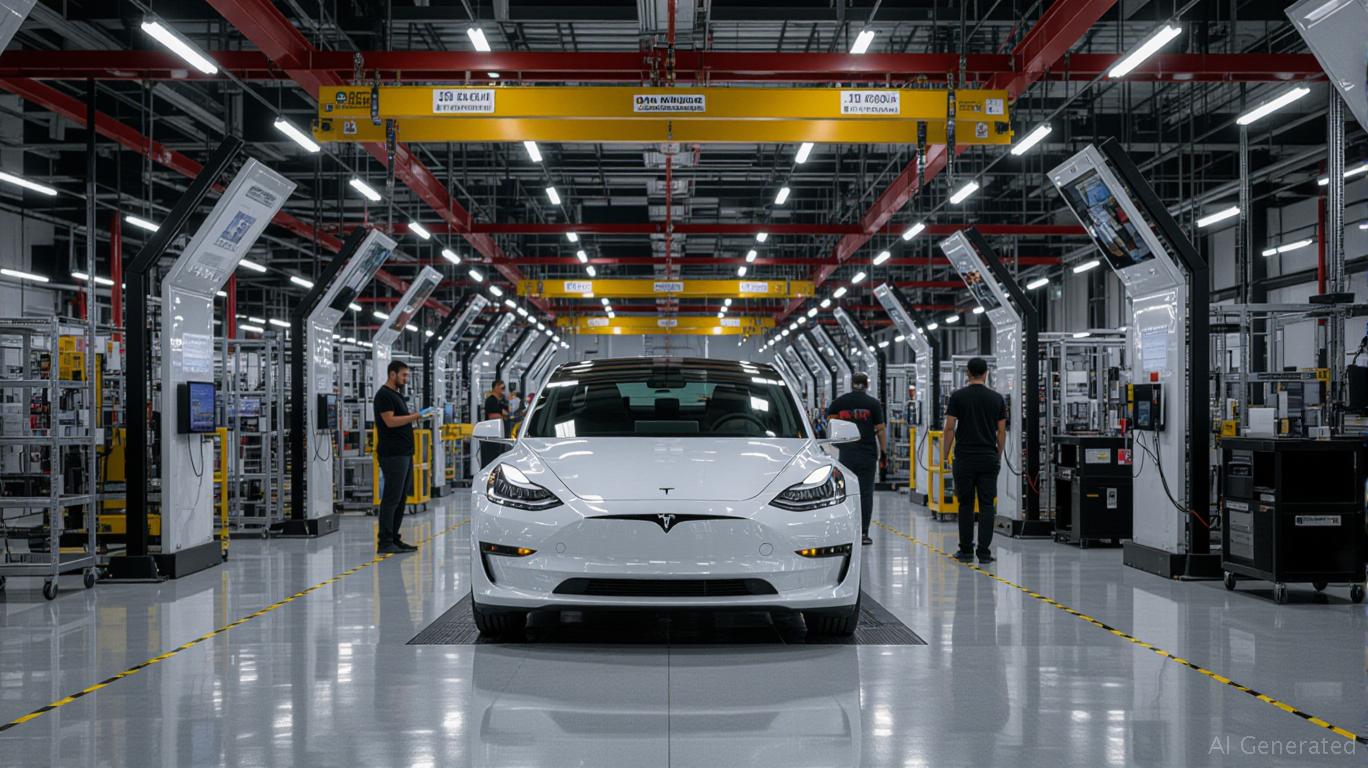AInvest Newsletter
Daily stocks & crypto headlines, free to your inbox
The escalating U.S.-China tariff war of 2024–2025 has reshaped global trade dynamics, introducing unprecedented volatility into markets. While sectors like automotive and solar energy face significant headwinds, others are emerging as pillars of resilience. This article examines how recent tariff policies have created asymmetric opportunities across industries and regions, offering investors a roadmap to capitalize on structural shifts.
The U.S. and China's tariff escalations—including Section 232 steel/aluminum tariffs, Section 301 levies on semiconductors and EVs, and the fentanyl-related duties—have created winners and losers. For instance, the 100% U.S. tariff on Chinese electric vehicles (EVs) has stifled exports, while the EU and ASEAN regions are capitalizing on supply chain reconfigurations. Meanwhile, the 50% U.S. tariff on solar cells has disrupted renewable energy projects, but also incentivized domestic production and alternative sourcing.
The Geneva Deal (May 2025) provided temporary relief, lowering reciprocal tariffs to 10% for 90 days, but left unresolved issues like rare earth supply chains and semiconductor competition. This uncertainty underscores the need for investors to focus on sectors with geopolitical insulation and demand inelasticity.
The 50% U.S. tariff on Chinese semiconductors and the broader Section 301 review have accelerated a “decoupling” of supply chains. While U.S. firms like Intel (INTC) and Applied Materials (AMAT) face higher input costs, they benefit from reduced competition and domestic investment incentives. ASEAN countries, particularly Malaysia and Vietnam, are fast becoming semiconductor hubs, attracting capital from companies like Taiwan Semiconductor Manufacturing (TSM).
Actionable Insight:
Investors should overweight semiconductor ETFs (e.g., SMH) and companies with diversified supply chains. For example, ASML Holding (ASML), a Dutch firm critical to advanced chip manufacturing, benefits from U.S.-EU collaboration and reduced reliance on Chinese markets.
The 100% U.S. tariff on Chinese EVs has created a domestic opportunity. Tesla (TSLA), already a U.S. manufacturer, stands to gain market share as imports from China become prohibitively expensive. Meanwhile, Rivian (RIVN) and Nikola (NKLA) could benefit from rising demand for American-made EVs.

In China, the tariffs have spurred a pivot to domestic consumption and ASEAN markets. BYD (002594.SZ), the world's largest EV maker, is expanding production in Southeast Asia, where lower tariffs and preferential trade agreements provide a competitive edge.
Actionable Insight:
Diversify exposure between U.S. EV leaders (e.g., TSLA) and Asian manufacturers (e.g., BYD) to hedge against regional trade risks.
The U.S. solar cell tariff (50%) has disrupted supply chains but also spurred innovation. First Solar (FSLR), which focuses on domestic production, is well-positioned, while Vestas Wind Systems (VWS.CO) benefits from the shift to wind energy as a tariff-agnostic alternative.
Rare earths—a critical component of EVs and defense tech—are another growth area. The Geneva Deal's rare earths trade agreement has stabilized prices, but geopolitical tensions persist. MP Materials (MP), the U.S. leader in rare earth mining, offers exposure to a sector with strategic national importance.
Actionable Insight:
Invest in rare earth miners and solar companies with domestic production capabilities.
The EU has filled supply gaps in steel and automotive parts, while ASEAN has become a manufacturing magnet for semiconductors and EV batteries. Investors can capitalize via regional ETFs like the iShares MSCI EM Asia ex-Japan ETF (AEMF) or the SPDR EURO STOXX 50 ETF (FEZ).
Actionable Insight:
Allocate to emerging market ETFs with heavy ASEAN exposure and EU industrials stocks.
While these sectors offer compelling opportunities, investors must account for risks:
- Policy Volatility: U.S.-China trade negotiations could shift abruptly, as seen with the Geneva Deal's temporary nature.
- Inflationary Pressures: Tariffs exacerbate consumer prices, potentially slowing demand in sectors like appliances.
Portfolio Adjustments:
1. Rebalance Sectors: Shift from tariff-sensitive industries (e.g., traditional autos) to tech, energy transition, and regional plays.
2. Hedging: Use inverse ETFs (e.g., SPEM) to hedge against overexposure to trade-sensitive equities.
3. Geopolitical Diversification: Pair U.S. tech stocks with ASEAN manufacturing ETFs to mitigate regional risk.
The tariff-driven market volatility has created a “new normal” where sectors with technological leadership, geopolitical flexibility, and regional diversification thrive. Investors who prioritize these themes—semiconductors, EVs, renewable energy, and ASEAN/EU exposure—can navigate the turbulence profitably. As the U.S.-China trade relationship remains contentious, the path to resilience lies in understanding where protectionism creates barriers, and where it clears the way for innovation.
Data sources: Peterson Institute for International Economics, U.S. International Trade Commission, Wealth Enhancement Group Market Movers analyses.
Tracking the pulse of global finance, one headline at a time.

Dec.17 2025

Dec.17 2025

Dec.17 2025

Dec.17 2025

Dec.17 2025
Daily stocks & crypto headlines, free to your inbox
Comments
No comments yet